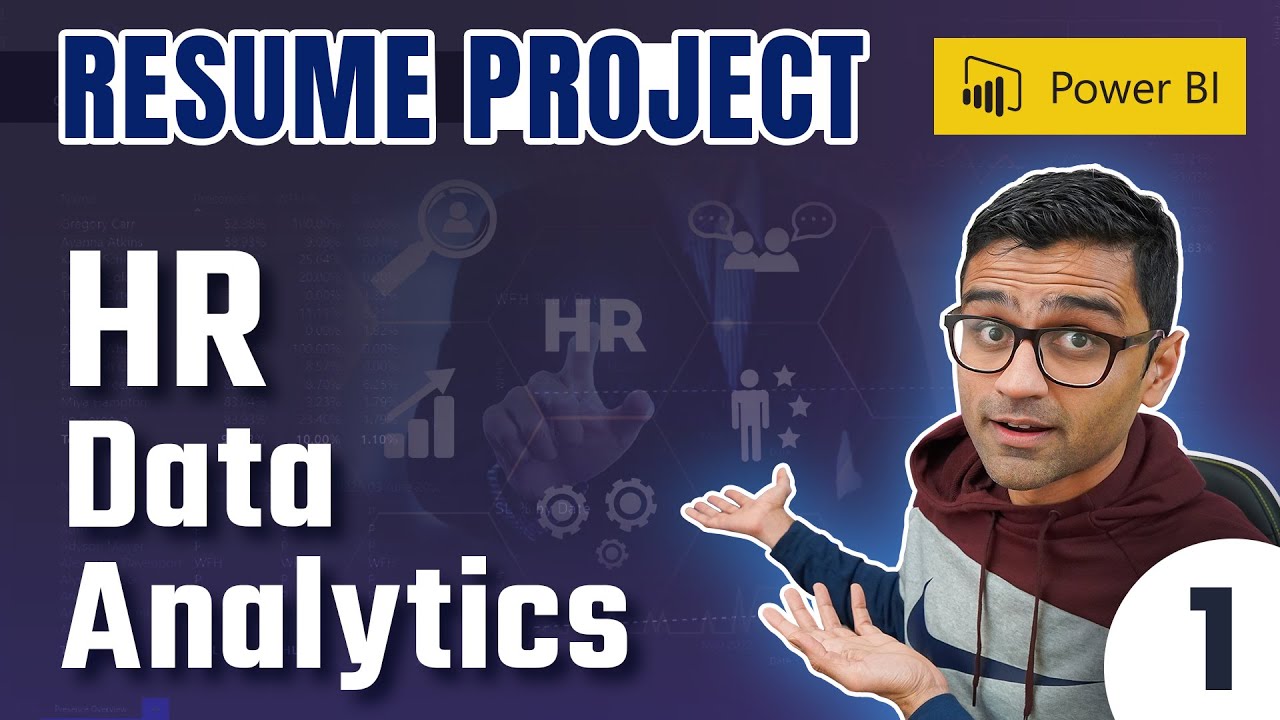#1: The Analytics Plan. Crafting a Winning Strategy from Scratch | 12-step data analytics roadmap
Summary
TLDRThis video, hosted by Yen, is the first in a four-part series on mastering the data analytics process. It focuses on the foundational 'Plan' stage of the 12-step data analytics roadmap. The video emphasizes the importance of setting clear, specific, and measurable business goals before starting any data project. It also highlights the need to ask the right strategic and operational questions, and how to identify actionable metrics that align with business objectives. Yen provides practical insights for building a solid data foundation to drive business growth.
Takeaways
- 📊 The video is part of a four-part series on mastering the data analytics process, with this one focusing on the first stage: planning.
- 🚀 Establishing clear business goals is essential to guiding the data analytics process and setting a direction for the entire project.
- ❓ Asking the right questions is crucial, as it helps connect business goals to relevant metrics and directs the data collection process.
- 📈 Metrics must be specific, measurable, and actionable, like conversion rates or website traffic, rather than vanity metrics that lack business impact.
- 🔗 Dimensions add context to metrics, helping to answer the who, when, and where questions for a comprehensive analysis.
- 🗂 Metrics quantify data, while dimensions provide descriptive details, enabling a deeper understanding of business performance.
- 💡 Good analytics tell a story about business goals, customers, and overall progress, starting from understanding goals and asking the right questions.
- 🛠 Having the right tools, like pivot tables and visualization extensions, simplifies the data analysis and reporting process.
- 📅 Breaking down metrics by dimensions, such as date or region, offers valuable insights that wouldn't be possible with aggregated data alone.
- 📚 The next video in the series will focus on the 'Collect' stage, where the process of gathering accurate and relevant data is explored.
Q & A
What is the main focus of this video?
-The video focuses on the first stage of the 12-step data analytics process roadmap, which is 'Plan.' It emphasizes the importance of setting clear business goals, asking the right questions, and identifying the key metrics to ensure success in data analytics projects.
Why is it important to set clear business goals before starting a data project?
-Setting clear business goals acts as a Northstar, providing direction and purpose. It ensures that all efforts are aligned toward specific, measurable outcomes, such as increasing sales or boosting user engagement, which leads to more focused data collection and analysis.
What are the four big stages in the data analytics roadmap mentioned in the video?
-The four big stages are Plan, Collect, Transform, and Deliver. Each stage focuses on different aspects of data analytics, from setting business goals to gathering and transforming data, and finally delivering actionable insights.
What is the difference between strategic and operational questions in data analytics?
-Strategic questions focus on the broader business objectives, such as how to increase user engagement or drive sales. Operational questions dive into specifics, like which web page has the highest bounce rate or what is the average time spent on a product page. Both types guide data collection and analysis.
What are 'vanity metrics' and why should they be avoided?
-Vanity metrics are metrics that look impressive on paper, such as a spike in website visits, but don't provide real value or actionable insights for the business. They should be avoided because they don't directly impact the business goals, such as increasing sales or conversions.
What are actionable metrics and why are they important?
-Actionable metrics are metrics that directly impact business goals and provide tangible insights into performance. For example, conversion rate, cart abandonment rate, and average order value are actionable metrics that help measure the success of efforts aimed at increasing sales.
What is the role of metrics and dimensions in data analytics?
-Metrics quantify data, answering 'how many' or 'how much' questions, such as the amount of revenue or the number of new customers. Dimensions provide context to the metrics, answering 'when,' 'where,' and 'who' questions, such as revenue by month or customer location. Both are necessary for comprehensive analysis.
Can you provide an example of how metrics and dimensions work together?
-An example is a pivot table showing revenue by date. The revenue (a metric) is quantified and broken down by dimensions like 'order date' or 'order month.' This allows you to see patterns, such as which days or months are the most profitable, rather than just seeing a lump sum of revenue.
Why is it crucial to ask the right questions in data analytics?
-Asking the right questions bridges the gap between business goals and the data needed to achieve them. It helps identify key metrics and guides data collection, analysis, and interpretation. Without the right questions, the data collected may not provide useful or actionable insights.
What should businesses focus on after setting clear goals in the 'Plan' stage?
-After setting clear goals, businesses should focus on asking the right questions that align with their goals, determining which metrics are most important to measure progress, and identifying the dimensions that provide context to those metrics. This ensures that the data collected will be relevant and useful for decision-making.
Outlines

此内容仅限付费用户访问。 请升级后访问。
立即升级Mindmap

此内容仅限付费用户访问。 请升级后访问。
立即升级Keywords

此内容仅限付费用户访问。 请升级后访问。
立即升级Highlights

此内容仅限付费用户访问。 请升级后访问。
立即升级Transcripts

此内容仅限付费用户访问。 请升级后访问。
立即升级浏览更多相关视频

What is Descriptive Analytics? - Data Science Wednesday

Data Analyst Project For Beginners (HR Analytics): 1 - Problem Statement

What are the basics of Ship Chartering?

Excel - Time Series Forecasting - Part 2 of 3

Automation Pyramid and the Unified Namespace | Unified Namespace (UNS) Basics 1

Short trick for RC | Golden rules for Reading Comprehension - Part 1 | Verbal Ability | Priyasha Das
5.0 / 5 (0 votes)
